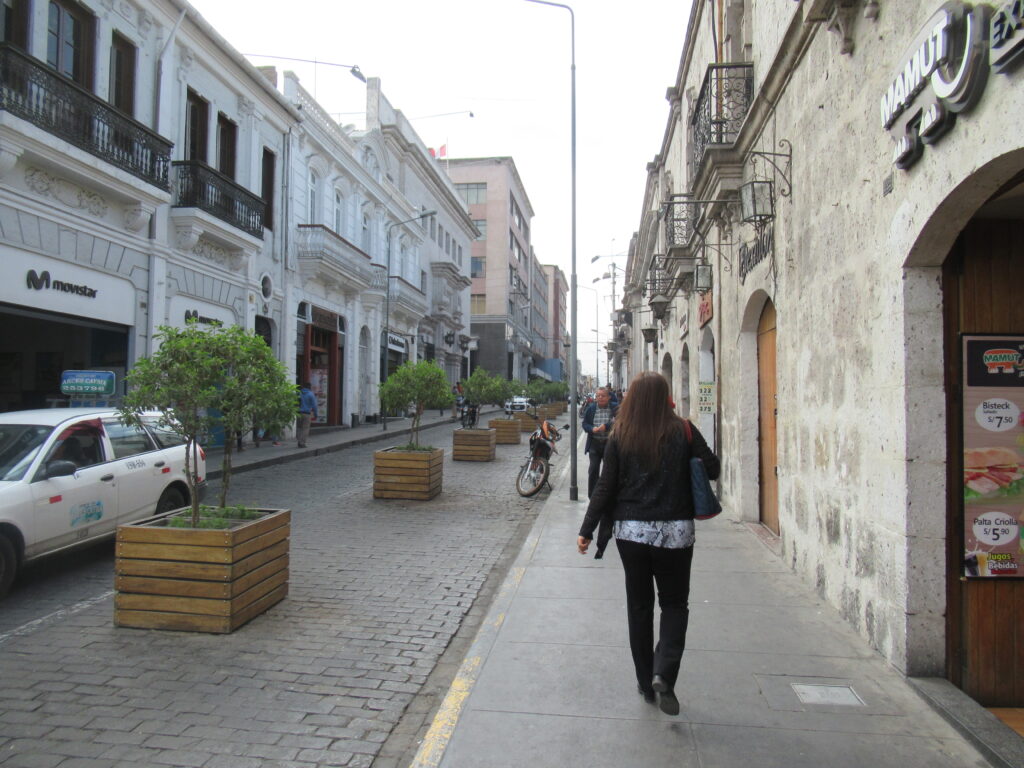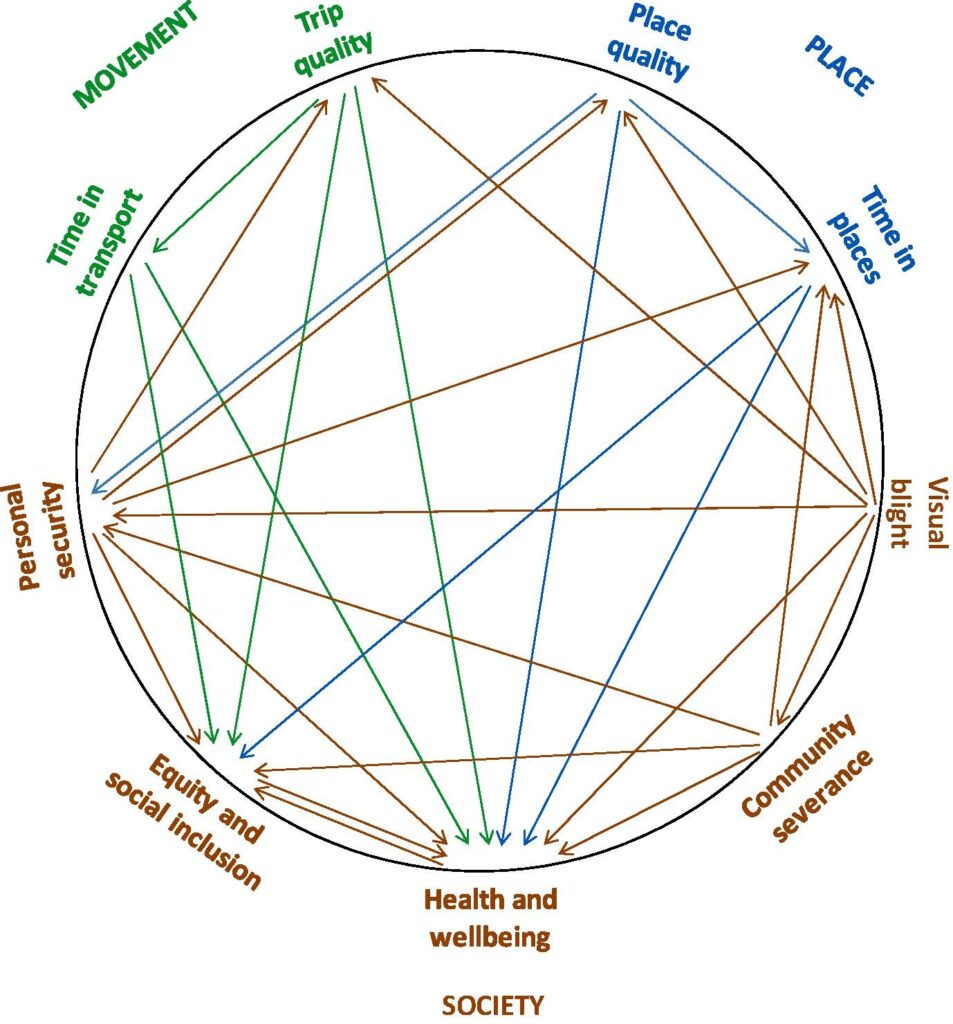Question: How does the quality of streets and public places influence quality of life?
Liveability is what makes people want to live, visit, or spend time somewhere. A livable place is one that contributes to people’s quality of life. One that allows people to earn a living and to live a healthy and satisfactory life.
Transport is part of liveability. A transport system that is fast, convenient, safe, and comfortable, improves people’s lives. The quality of public spaces also contributes to liveability. Public spaces include streets, squares, and parks. People tend to feel happier when, in their daily life, they can use spaces where they feel relaxed and safe.

Liveability is good for people. It’s also good for business, because happy people tend to spend more. So local governments are interested in increasing liveability. But what is better for liveability?
Example 1. How to measure liveability?
I was part of CREATE, a EU-funded project involving cities in Europe and the Middle East. One of the many objectives of this project was to develop indicators for governments to assess the liveability effects of their transport policies. This work is explained in this paper. The paper proposed 9 liveability indicators and explains how they can be measured (in general and in terms of money).
The figure below shows the indicators, and how they relate to each other. The figure does not include indicators that are already considered when governments forecast the effects of transport policies, such as travel time and cost, safety, and air pollution.
Some indicators are about movement. Trip quality is everything that contributes to people liking their trips, such as comfort and convenience. Time in transport is how people use their time when travelling (for example, staring at their phones).
Other indicators are about transport-related spaces (e.g. streets are used for transport but also for no-movement activities such as sitting in an outdoor café). Place quality is how good those spaces are for those no-movement activities. Time in places is how much time people spend in those spaces. More time is better because it means people are enjoying themselves (and spending more money on local businesses).
Other indicators are about general aspects that are important for society: lack of visual blight (i.e. the transport infrastructure is not considered ugly or intrusive), community severance (the transport infrastructure, or traffic, are not a barrier to pedestrians), health and wellbeing, equity and social inclusion (the needs of all are considered), and personal security (people feel safe from crime in streets, stations, and vehicles)

Example 2. What makes people happy about streets in their city?
As explained above, the quality of streets is important for liveability. But what do people consider as “quality”? In this report (also part of the CREATE project ), we used data from a survey of more than 8,000 people who used 80 commercial streets in London. These people were more satisfied in streets that had good pedestrian pavements and clean air, and where they felt safe from crime.
The question arising from these results is: do better-quality streets attract more people? This paper, using the same data as above, suggests that the answer is yes. Streets judged as “more attractive” are also those used by more people (as seen, for example, from video surveys).